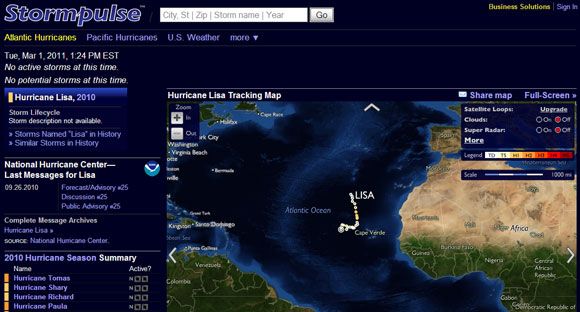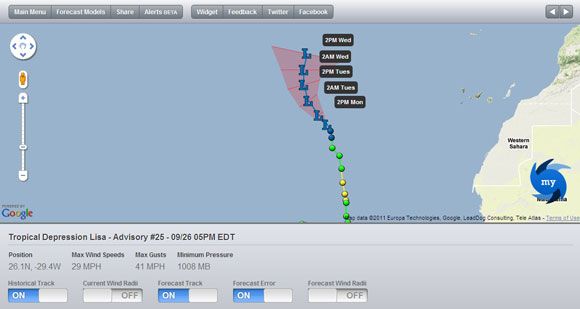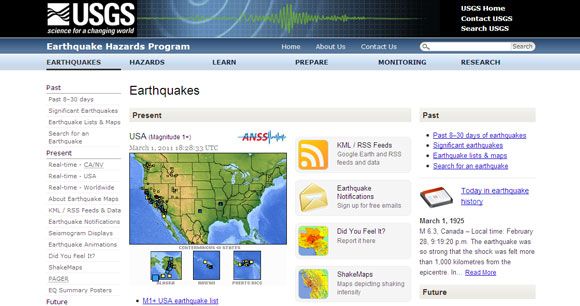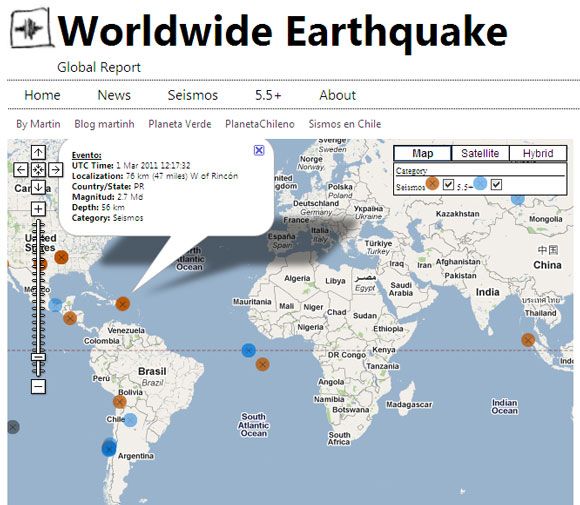The inconvenient truth is that we aren't really above nature as we thought ourselves to be. Hurricanes, tsunamis, or volcanic eruptions"¦you name it, something seems to be always churning in some part of the world.
The least we can do is respect our planet and its fragile ecosystem. The prudent thing we can do is to follow any advisories and prepare for a forecasted threat. There are some natural phenomena you cannot do anything about, like earthquakes which strike suddenly. Then there are some like hurricanes, cyclones, and tropical storms which can be predicted with a fair amount of certainty.
Either way, it pays to be aware of what's happening around our Earth. There's the news and then there are online tracking services which keep you updated with the latest information and warnings. Let's take a look at four tracking websites which try to catch our whimsical planet at its worst.
Stormpulse
Some countries like the US and those along the Atlantic coast have a hurricane season. Unlike the other seasons, this one is anything but pleasant. Let's say you are planning a trip around the Caribbean, and you just wanted to know how the weather will spell out. Or you could be just a weather watcher or a hurricane hunter with an interest in developing storms. Stormpulse is the eye in the browser you could be searching for. The interactive map helps you track storms in the Atlantic and Pacific.
The map app collects information from satellites, buoys, and radars. Features like cloud cover, radar, buoy locations and labels can be toggled off with a click. You can track hurricanes by name and location to understand if it will wax or wane.
MyHurricane
MyHurricane is a full screen interactive map on which you can track storms and hurricanes with their projected paths. You can search for hurricanes by name and get details like maximum wind speed, maximum gusts, and minimum pressure. Simple switches enable you to toggle the forecast options on the map. One of the more useful features (although in beta), is the storm alert you can sign up for with Twitter.
Also check out the official website of the National Hurricane Center.
U.S Geological Survey
The official website keeps an eagle eye on developing natural hazards. The site has a dedicated page on earthquakes with real-time data and Google Earth and KML files. You can subscribe to the RSS feed which gives you regular information on US specific and worldwide tremors and quakes. USGS covers nearly all imaginable natural threats with its "hazards" programs. Landslides, volcanoes, floods, tsunamis, and hurricanes are backed up by real-time monitoring and interactive maps. The Earthquake Hazards program is probably the most feature rich with its Past, Present, and Future probability tools.
The USGS site also has a section for kids where they can learn all about quakes with the help of interactive study tools.
Worldwide Earthquake
The site began as a personal project but it has since scaled up. It is basically a Chilean website but covers the planet using Google's Maps as the platform. Unfortunately, it's not well integrated with Google Earth in spite of the link on the site. Clicking on the map gives you an information bubble with numbers on the magnitude, time, location, depth, and the category.
I haven't mentioned the many wonderful weather apps that dot the web and keep us informed on a daily basis. You can check out the lineup of some of the cool weather apps we have covered over the years. Hollywood movies have made us slightly paranoid about climate change and natural disasters. Though not as cataclysmic, natural disasters remain earthshaking as the New Zealand earthquake has again proved.
Though I am not a weather expert, maybe these web apps will help to educate us more about our fickle planet. What do you think?
Image Credit: Shutterstock





